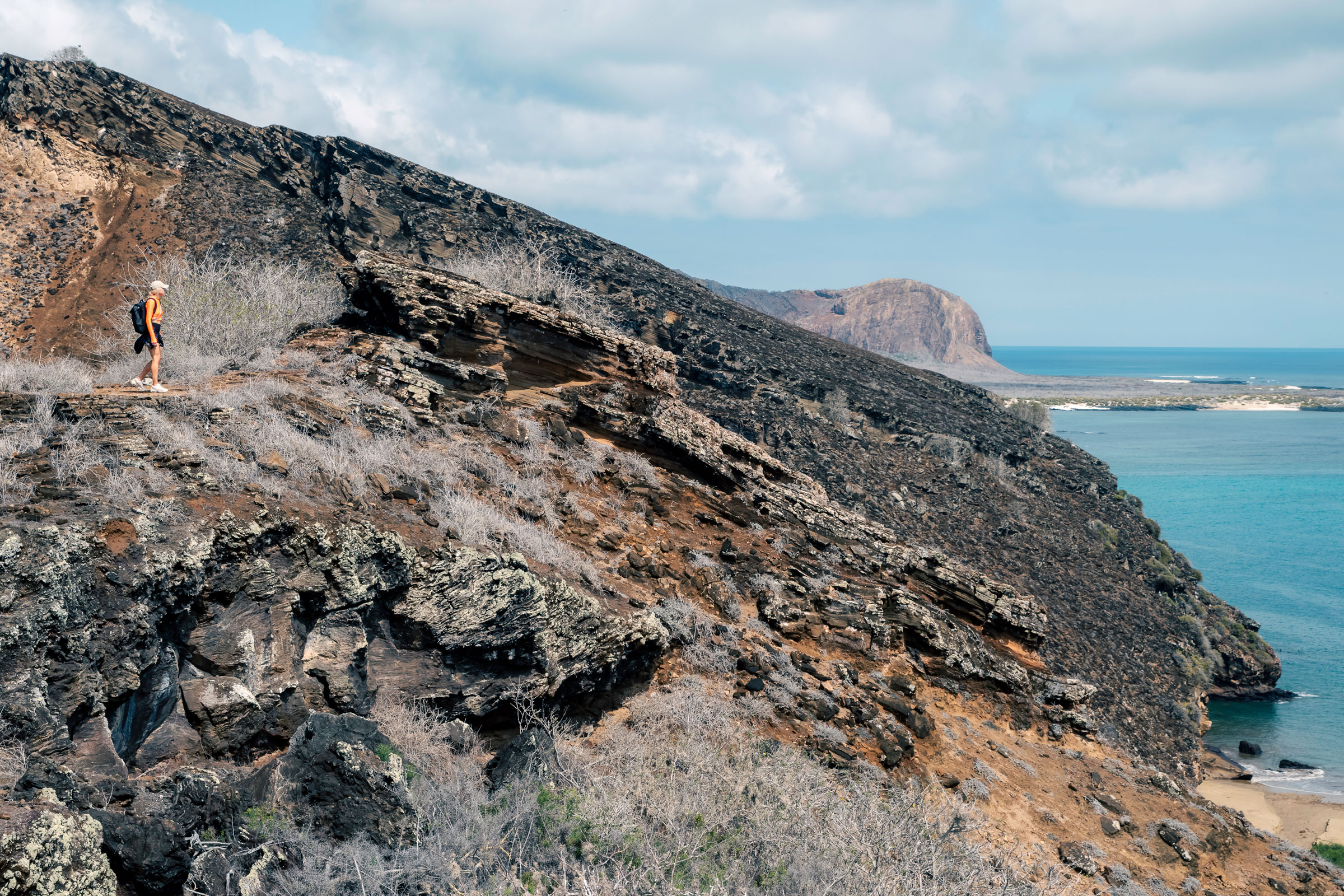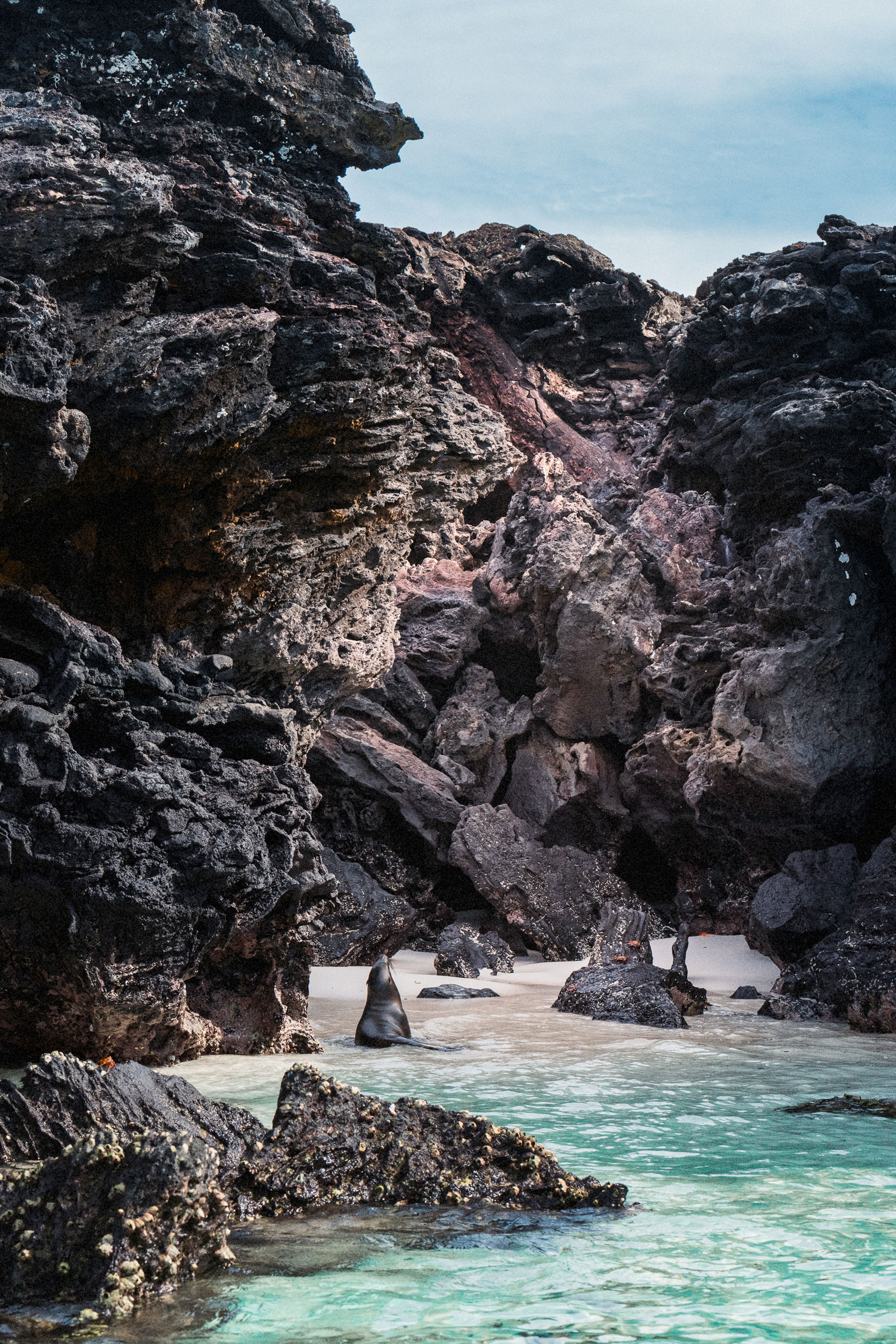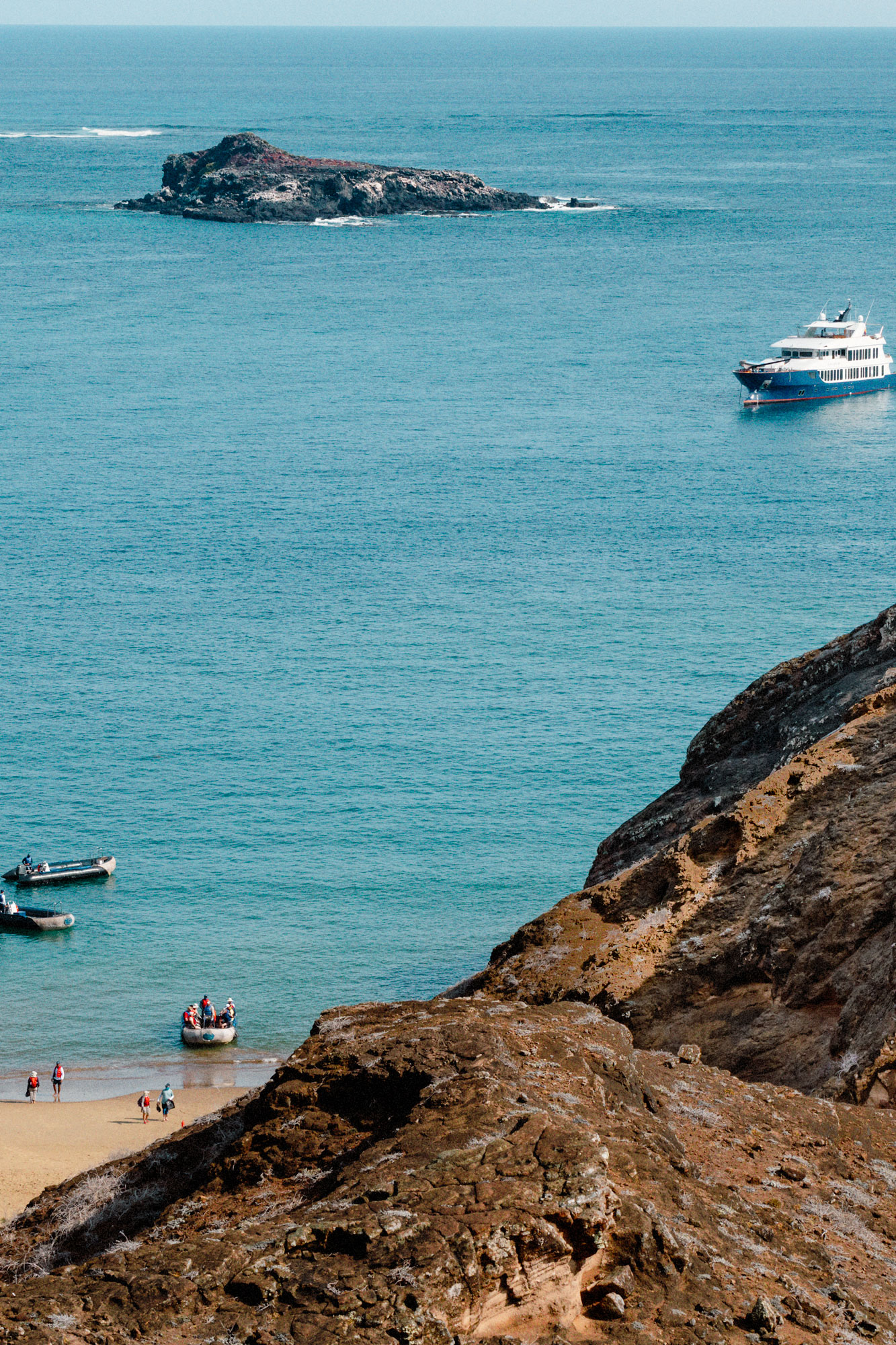Story at a glance:
- gb&d explores the magical region and its ongoing research on a trip with Ecoventura.
- In 2000 Ecoventura received the Smart Voyager ecological certification.
- Growth in land-based tourism has brought technical and environmental concerns.
In the week I spent exploring the Galápagos Islands, days would go by where I didn’t see a single road. No cars. No buildings. No cell phone towers. No streetlights, no airplanes. And, except for the handful of other passengers and crew onboard Origin, a luxury yacht from Ecoventura, no other humans.
Instead, the chaos and noise of the human world was replaced by the chaos and noise of the natural one. With the help of Ecoventura’s extremely skilled local naturalists I was surrounded by sea lions, iguanas, lizards, turtles, finches, cormorants, doves, frigates, boobies, albatrosses, flamingos, giant tortoises, whales, sharks, crabs, penguins, gulls, manta rays, and dozens of types of fish that exist only in the Galápagos.
The Galápagos Islands are one of the most elusive and biodiverse destinations in the world; 98% of the land here is a national park, and 97% of the reptiles and 80% of the birds here cannot be found anywhere else in the world. It’s the land that helped spark Darwin’s On the Origin of Species and has captured the imaginations of nature lovers worldwide. The islands are a global treasure, and I visited to learn not just about the wildlife but also the preservation work being done.
Located 600 miles off the coast of Ecuador, three ocean currents cross the Galápagos Islands, making them uniquely vulnerable to climate change and warming oceans. They also lie directly in the path of the intermittent El Niño climate phenomena, making them even more subject to damage. NGOs are doing good work protecting the Islands, and the government has leveraged international cooperation to expand marine protections. Private organizations like Ecoventura are contributing to positive change as well.
- Photo by Chris Howe
- Our Zodiac boats arrive on the shore of Punta Pitt. Photo by Chris Howe
Since you must travel to the islands by boat, and the majority of the islands themselves are completely natural and undeveloped (no hotels, no running water, no bathrooms), the only way to truly experience the Galápagos is on a liveaboard boat. This has allowed leading tour operators like Ecoventura to set the criteria for sustainable tourism practices.
In 2000 the company received the Smart Voyager ecological certification, which sets standards like producing fresh water onboard and implementing waste management and recycling programs. The company also hires locally, uses locally sourced products and food for their tours, and implements water and energy conservation practices. However, as a visitor, the most important aspect I felt was the sense of responsibility for the islands themselves instilled by the staff and crew.
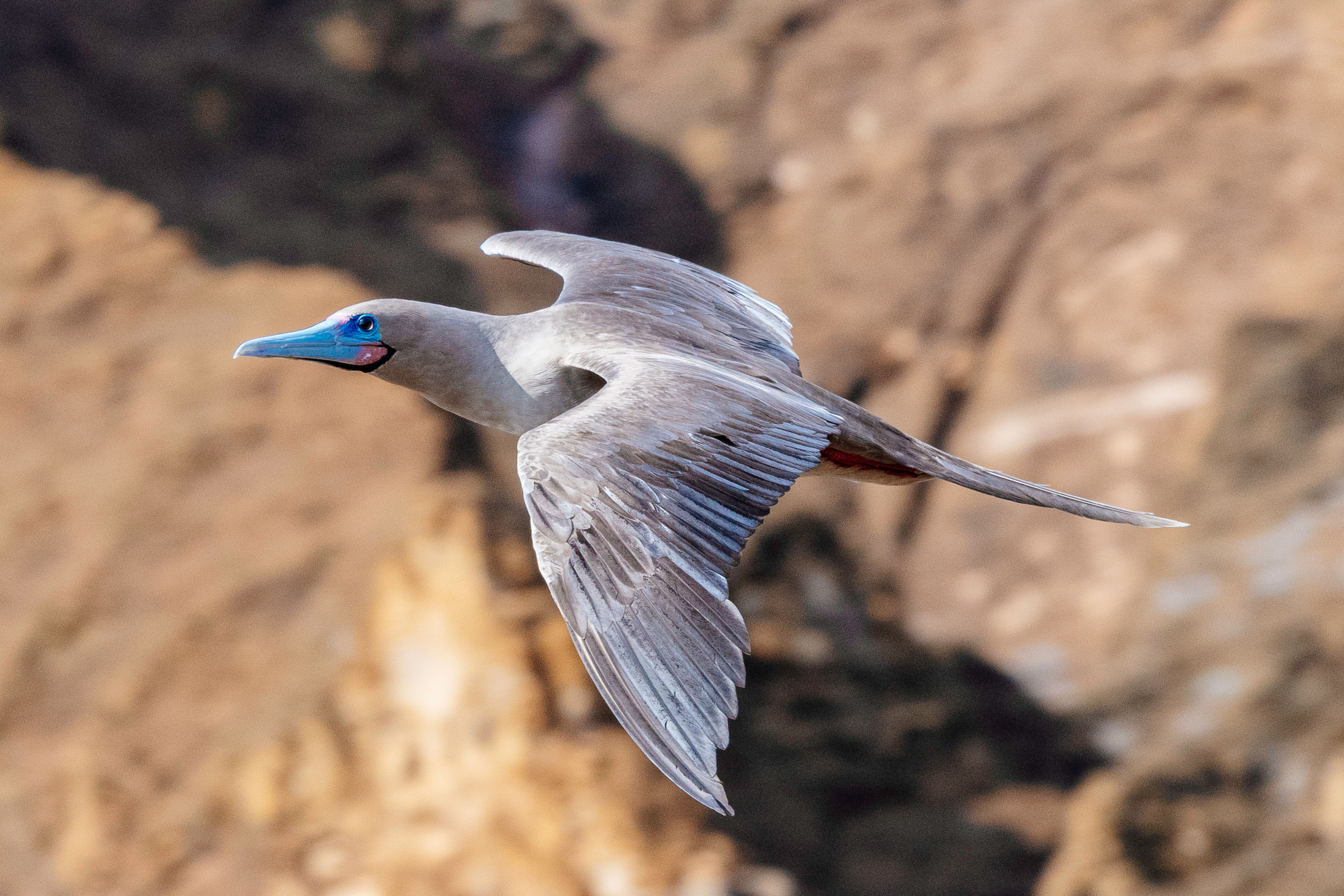
Photo by Chris Howe
Ecoventura delivers a view into the pristine and unrivaled natural world both above and below water, a truly wild string of active volcanoes crammed full of fascinating history and wildlife. While I learned about major climate events, the warming oceans, and illegal fishing, I also I learned smaller, local details—like that there are three main types of lava that created the islands and how to spot them. Imagine you stepped on sharp, crumbly land in bare feet and said, “Ah! Ah!” This is what they call the first kind of lava, a’ a’, as it viscous flow dries into rough, jagged surfaces. The second type is pahoehoe, when the lava forms in a smooth, ropy like texture. The third is the result of the molten magma finally meeting the water and forming a skin, or crust, making hard pillow shapes. They call this pillow lava. These kinds of details help me deepen my connection and reverence for the land.

Photo by Chris Howe
During my tour Ecoventura arranged a guided visit to the famed Charles Darwin Research Station. The station has been supporting scientific research on the islands for more than 60 years and is funded in part by donations from Ecoventura to the Galapagos Biodiversity and Education for Sustainability Fund. At the foundation we witnessed how researchers are caring for the island’s different types of giant tortoises, with many living to be over 100 years old and weighing more than 900 pounds. The Foundation’s positive impact on the island helped play a factor in the islands being removed from UNESCO’s World Heritage in Danger list.
Giant tortoises aren’t the only species with population growth concerns in the Galápagos. The amount of local residents are doubling every 11 years. Explosive growth in land-based tourism has brought technical and environmental concerns to the still underdeveloped building and energy infrastructure on the islands.
“The Galapagos is one of the most challenging places in the world to consider the potential impact of architecture in light of the desire for sustainability,” says David Heymann, a professor of architecture at the University of Texas Austin. Heymann has helped co-develop the “Do-No-Harm, Do-More-Good: Building for Sustainability in the Galapagos,” which questions how sustainable relations develop between natural environments, human uses and needs, and the built environment.
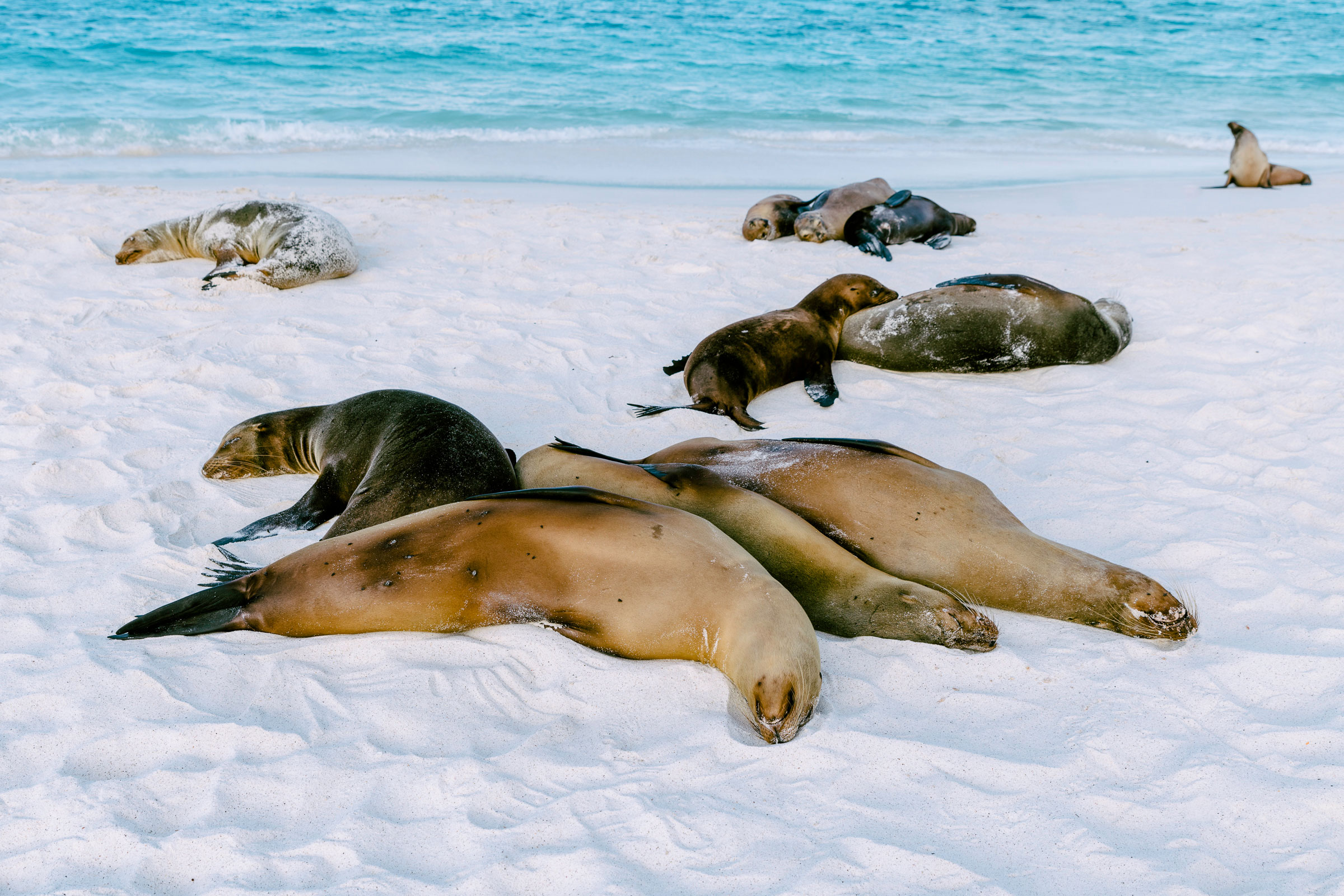
A colony of sea lions is seen on the white coralline sand beach of Gardner Bay above. Below, a three-hour hike offers an amazing view of the eastern Pacific Ocean.
Photo by Chris Howe
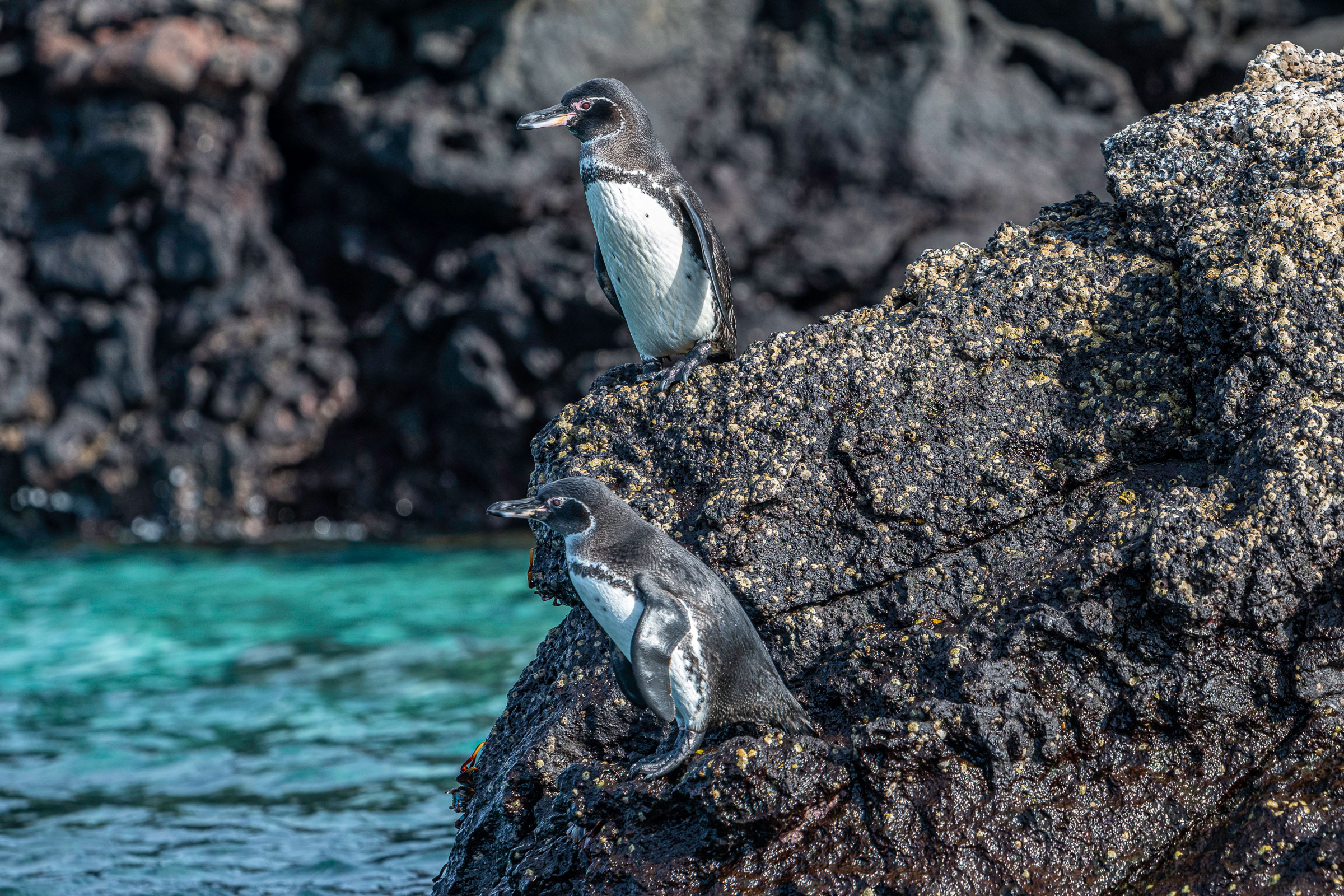
Galápagos penguins near Pinnacle Rock on Bartolomé Island. There are less than 2,000 of these endangered penguins left in the world. They are the only penguins to live north of the equator. Photo by Chris Howe

